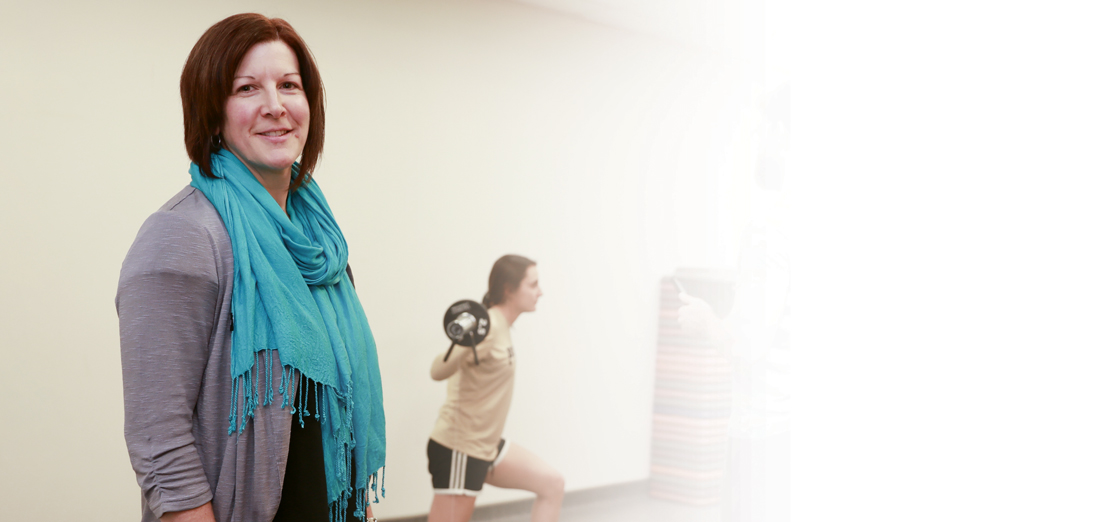
Researcher focuses on strength training for all youth
Joanne Parsons [BMRPT/03, M.Sc./09, PhD/14] has always loved sports. That passion has developed into a career in injury-prevention research for both athletes and non-athletes.
Originally from Birtle, Man., a small town near the Saskatchewan border, Parsons became interested in how the body functions as she played volleyball and other sports in high school. While working toward a science degree in Brandon, she started volunteering in the university’s athletic therapy clinic, which led her to pursue a physical therapy degree.
After earning U of M degrees in physiotherapy, kinesiology and applied health sciences, Parsons joined the College of Rehabilitation Sciences in 2014 as an assistant professor of physical therapy. She also leads the U of M’s Sports Injury Prevention Lab.
Parsons’ research is mostly focused on the use of strength and resistance training to prevent injury in young athletes. But she has recently been drawn to the use of this training for youth who aren’t athletes.
“Kids need to develop strength and power, not just to be good athletes who perform well, but to prevent injury and maintain health and function,” she says. “We know that as adults we are more inactive, so if we don’t build up a good reserve of muscle early on, we’re going to end up in trouble later in life.”
Parsons’ interest in strength training for youth was facilitated by a relationship she built with Grant Park High School, which has a forward-thinking vision about training and exercise. There she worked with Kayla Duna, a kinesiologist who provided physical activity and resistance training programs to the entire school community.
“She told me about the school’s philosophy and ideas around having a school kinesiologist in the weight room, and what kind of potential that can have for students,” Parsons says. “It’s not a role a lot of schools have.”
Parsons notes there is a myth born out of 1980s research that strength-building activities could lead to injury or stunted growth in youth. But that kind of thinking is out-of-date, she says, noting that recent studies show a link between low baseline strength in adolescence and an increased risk of dying early.
Strength and conditioning activities are too often thought of as a testosterone-fueled activity, she says. It’s an attitude she’d like to see change to something more inclusive.
“It’s really about making it accessible to everybody – to girls, to people who are not hyper-masculine. It’s a key ingredient to being healthy and functional at all ages,” she says.
One of Parsons’ studies was a randomized controlled trial that compared two groups of female athletes, ages 10 to 14. She found that strength training of the legs did not improve the athletes’ safe jump landing abilities any more than strength training of the arms. “This suggests trunk stability and strength may be more of factor, which has implications for the design of conditioning programs, if injury prevention is a goal,” she says.
Parsons is currently studying leg asymmetry in university athletes, with funding from the National Strength and Conditioning Association Foundation. The participants in the current pilot are U of M Bison track athletes. Bison athletes from football, soccer, volleyball, basketball and hockey will follow in the full study.
Using a device called a linear position transducer, she and her research assistant assess the athletes’ strength and power characteristics as they perform jumps under loaded and unloaded conditions, with the right and left legs alternately tested.
“These are athletes who are healthy and competing at their best, but we know that strength and power asymmetries can still be present in these athletes, which can increase risk of injury and negatively affect performance,” she says. “We’re looking to see if asymmetry is present, to what degree, and what some of the contributing factors might be.”






